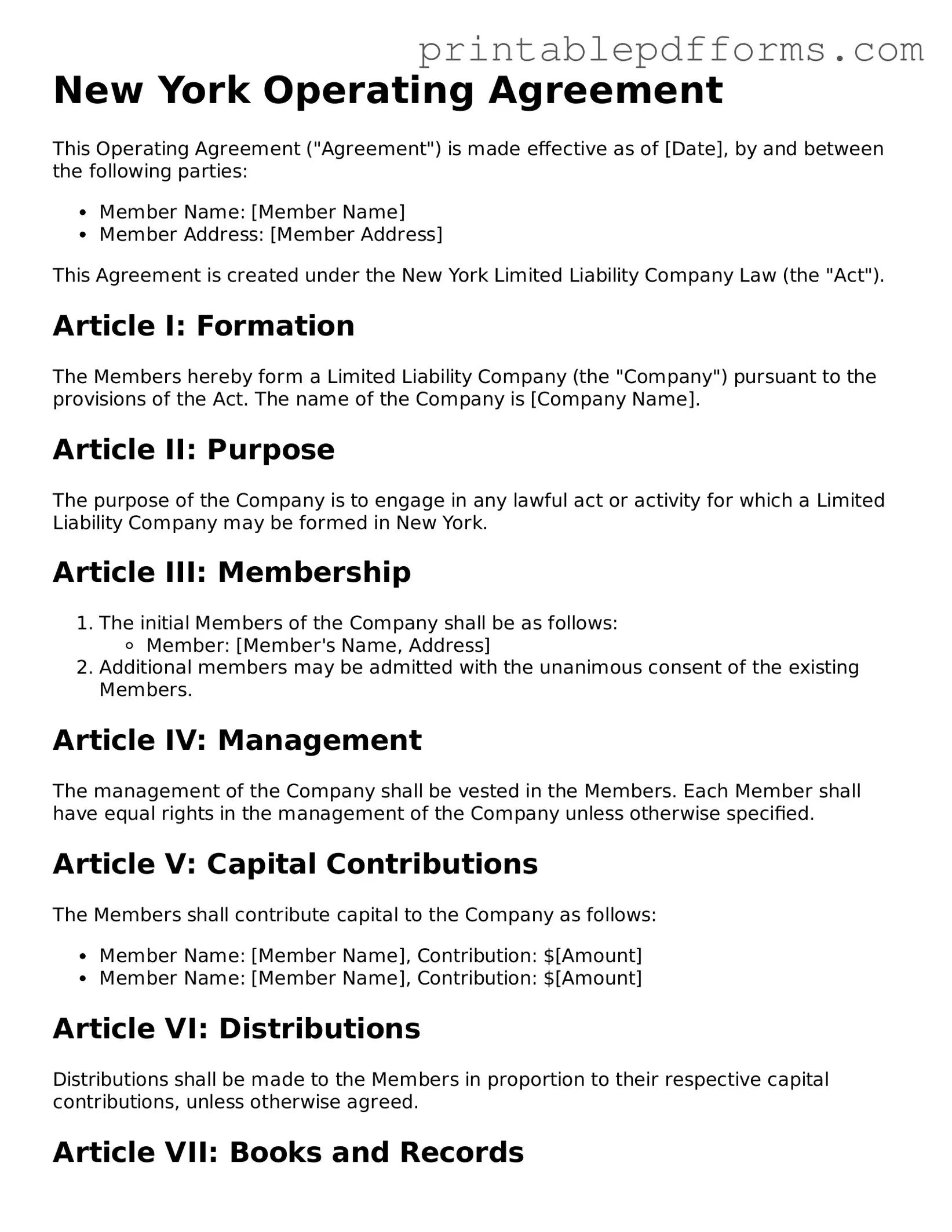New York Operating Agreement
This Operating Agreement ("Agreement") is made effective as of [Date], by and between the following parties:
- Member Name: [Member Name]
- Member Address: [Member Address]
This Agreement is created under the New York Limited Liability Company Law (the "Act").
Article I: Formation
The Members hereby form a Limited Liability Company (the "Company") pursuant to the provisions of the Act. The name of the Company is [Company Name].
Article II: Purpose
The purpose of the Company is to engage in any lawful act or activity for which a Limited Liability Company may be formed in New York.
Article III: Membership
- The initial Members of the Company shall be as follows:
- Member: [Member's Name, Address]
- Additional members may be admitted with the unanimous consent of the existing Members.
Article IV: Management
The management of the Company shall be vested in the Members. Each Member shall have equal rights in the management of the Company unless otherwise specified.
Article V: Capital Contributions
The Members shall contribute capital to the Company as follows:
- Member Name: [Member Name], Contribution: $[Amount]
- Member Name: [Member Name], Contribution: $[Amount]
Article VI: Distributions
Distributions shall be made to the Members in proportion to their respective capital contributions, unless otherwise agreed.
Article VII: Books and Records
The Company shall maintain complete and accurate books and records of the Company's business and affairs as required by the Act.
Article VIII: Amendments
This Agreement may be amended only by a written agreement signed by all Members.
Article IX: Indemnification
The Company shall indemnify any Member to the fullest extent permitted by law against any and all expenses and liabilities incurred in connection with the Company's affairs.
IN WITNESS WHEREOF, the Members have executed this Operating Agreement as of the date first above written.
- _________________________ (Signature of Member)
- _________________________ (Date)
- _________________________ (Signature of Member)
- _________________________ (Date)
